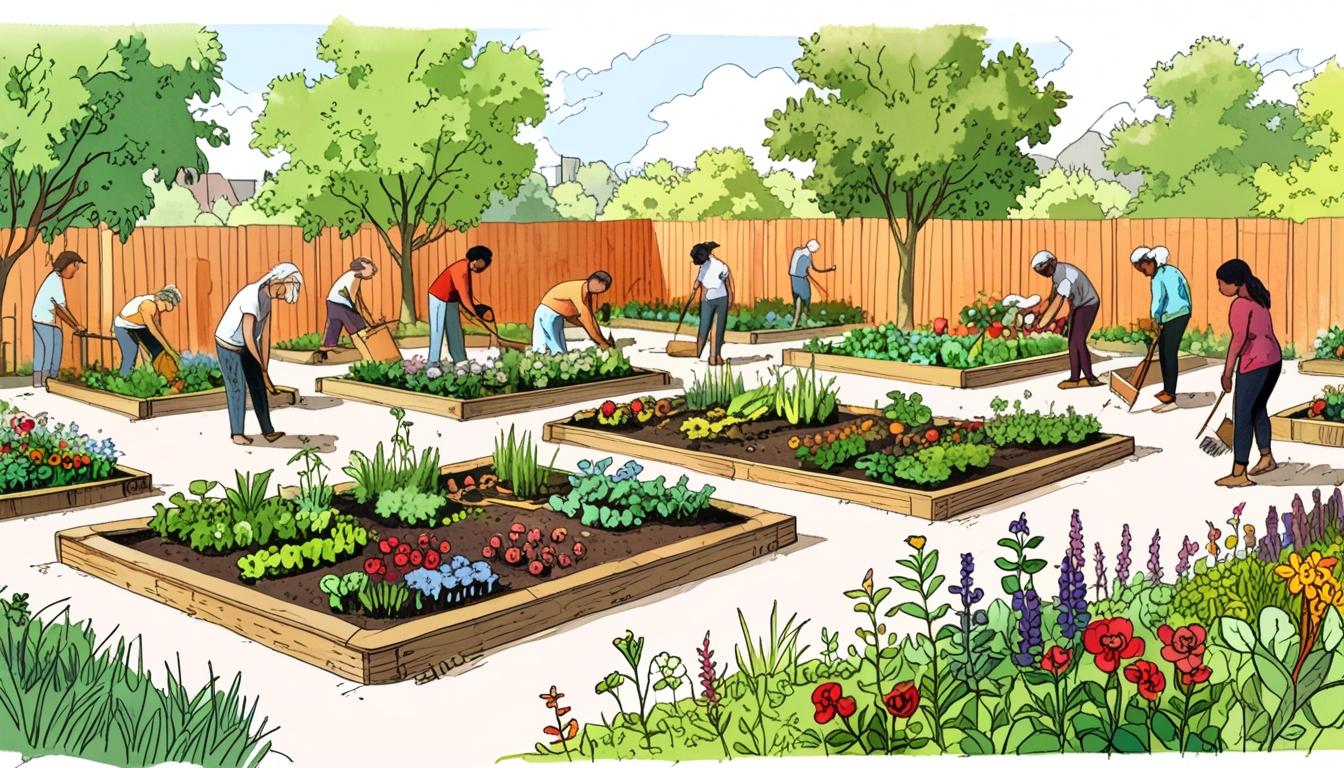Unearthed: The Radical History of Gardening in Britain
“Being able to grow your own food is one of the most radical ways that you can express your freedom, your sovereignty, your liberation,” asserts Valerie Goode, founder and chief executive of the Coco Collective, a Black-led community gardening organisation based in south London. Her organisation, established four years ago, aims to cultivate social connection and reclaim food sovereignty within the African diaspora.
Goode highlights that many volunteers at the Coco Collective are closely tied to generations who historically worked the land, suggesting a deeply rooted connection to agricultural heritage. This community-driven initiative, which revitalises a 1,200-square-metre plot of waste ground in Lewisham, embodies a powerful narrative of resilience and healing through gardening. Goode emphasizes that gardening transcends mere aesthetics; it is a vehicle for empowerment where individuals reclaim not only their food but also a sense of identity.
The Coco Collective's approach is showcased in the new exhibition at the British Library titled Unearthed: The Power of Gardening, which delves into the multifaceted socio-political history of gardening in Britain. This exhibition challenges conventional perceptions of gardens as mere decorative spaces. Instead, it presents a narrative that unravels the complex questions surrounding land ownership, food production, and social justice.
Curator Maddy Smith notes that traditionally, gardening has been viewed as a leisure activity for the privileged. However, the exhibition aims to illuminate its expansive historical context, where gardening serves as a lifeline during times of economic hardship. Among the artefacts on display is an 11th-century illuminated guide to herbal remedies, the sole surviving example from Anglo-Saxon England, alongside Richard Gardiner's Profitable Instructions of Kitchin Gardens, illustrating community resilience in the wake of crop failures in the 1590s.
The exhibition also confronts the dark legacy of land enclosure, which transformed common lands into private estates since the Great Plague of 1348. This shift sparked numerous social conflicts, as rural communities fought for their rights. A poignant 1791 map from Bow Brickhill reveals the division of communal land, highlighting the allocation of small patches to “the Poor’s Allotment,” an early indication of grassroots activism.
“People have had to fight for the right to garden over the centuries,” Smith explains, adding that the exhibition includes materials related to historical movements such as the Diggers and Levellers, who demanded land reform in the 17th century. Additionally, accounts of the Levenshulme land grabbers, a group known for cultivating six acres of unfenced church land in 1906 to support the unemployed, are featured, illustrating a continuum of protest and community mobilisation.
Gardening's impact extends far beyond personal enjoyment and ecological benefits, as evidenced by the early 19th-century orchid craze, which devastated natural ecosystems. The exhibition also recounts the Royal Navy’s exploitative attempts to cultivate New Zealand flax by forcibly transporting Māori chiefs, highlighting colonial attitudes towards indigenous knowledge and agricultural practices.
Modern critiques of gardening culture, including the dominance of monocultural lawns, are encapsulated in a striking juxtaposition: a plan of Capability Brown’s lawns at Blenheim Palace is displayed alongside a contemporary poster by artist Sam Wallman, proclaiming "Hoes over mows." This contrast underlines the ongoing tension between aesthetics and ecological integrity in contemporary gardening discourse.
Ultimately, the Unearthed exhibition serves as a profound reminder that gardens are not only spaces of pleasure but also arenas of conflict, identity, and belonging. By commemorating the radical history of gardening in Britain, it invites visitors to reflect on their own connections to the land and the power dynamics that continue to shape how we cultivate our environments.
Reference Map:
- Paragraph 1 – [1], [4]
- Paragraph 2 – [1], [3]
- Paragraph 3 – [2], [7]
- Paragraph 4 – [1], [5]
- Paragraph 5 – [1], [6]
- Paragraph 6 – [2], [7]
- Paragraph 7 – [1], [4]
- Paragraph 8 – [1], [2]
Source: Noah Wire Services
